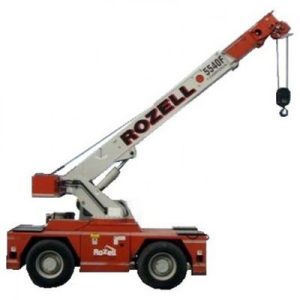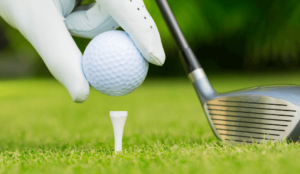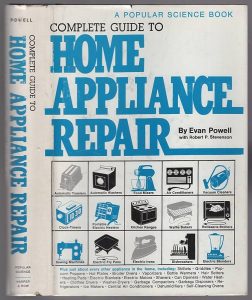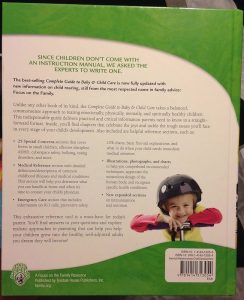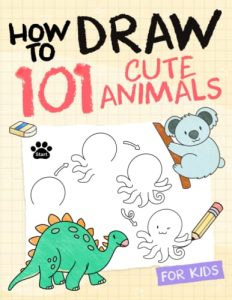Contents
- The Role Of The Nail In Paw Health
- The Paw Pad: A Protective Cushion
- Recognizing The Signs Of A Nail Growing Into The Pad
- Common Causes Of Nail Overgrowth
- Proper Nail Maintenance And Trimming Techniques
- Diet And Nutrition For Healthy Nails And Paws
- Regular Paw Care And Hygiene Practices
- A Veterinarian’S Role In Treating Nail-Related Issues
- Home Remedies And Preventative Measures For Paw Health
- When To Seek Veterinary Care
- Frequently Asked Questions For Dog Nail Growing Into Pad
- Conclusion
A dog nail growing into the pad is a common issue that can cause pain and discomfort for dogs. It is important to address this issue promptly by seeking veterinary attention.
Neglecting this can lead to infection and further complications. We will explore the causes, symptoms, and treatment options for a dog nail growing into the pad. We will also provide some tips on how to prevent this problem in the future, ensuring the well-being and comfort of your furry friend.
The Role Of The Nail In Paw Health
The health of a dog’s paw can be greatly affected if its nail grows into the pad. This can lead to pain, inflammation, and infection, emphasizing the importance of regular nail trimming and monitoring.
Importance Of Properly Groomed Nails
Properly groomed nails are essential for maintaining optimal paw health in dogs. Here are some key reasons why it’s important to keep your furry friend’s nails in good condition:
- Comfort and pain prevention: Long nails can dig into a dog’s paw pad, causing discomfort, pain, and even infections. Regular nail trims prevent this from happening.
- Preventing injuries: Overgrown nails can easily catch on objects or become snagged in carpet, resulting in painful breaks or tears. By keeping nails trimmed, you reduce the risk of such injuries.
- Promoting proper gait: Long nails can alter a dog’s gait and throw off their balance, leading to joint strain and even musculoskeletal issues. Keeping nails at a proper length aids in maintaining a healthy and natural gait.
Role Of The Nail In Weight-Bearing And Balance
The nails of dogs play a crucial role in weight-bearing and balance. Here’s why:
- Proper weight distribution: Nails act as gripping tools while dogs walk or run. They provide stability and help distribute the weight properly onto the paw pads and limbs. This enables dogs to move gracefully and efficiently.
- Enhancing traction: Nails provide dogs with traction on various surfaces, especially when navigating slippery or uneven terrains. They prevent dogs from sliding or losing control, allowing for a secure grip while walking or running.
- Maintaining balance: Well-groomed nails contribute to a dog’s overall balance. They provide a solid foundation, allowing dogs to maintain stability and adjust their body position while performing various activities.
By recognizing the importance of properly groomed nails and understanding their role in weight-bearing and balance, you can help ensure your dog’s paw health and overall well-being are at their best.
The Paw Pad: A Protective Cushion
Discover The Paw Pad, an innovative solution to protect your furry friend’s paws from the discomfort of a nail growing into the pad. With this protective cushion, your dog can enjoy a pain-free and active lifestyle. Take care of your pet’s wellbeing with The Paw Pad today.
The paw pad is an essential part of a dog’s anatomy, serving multiple functions to ensure their overall well-being. Not only does it provide protection, but it also plays a crucial role in shock absorption and providing traction on various surfaces.
Function Of The Paw Pad In Shock Absorption:
- The paw pad contains fatty tissue that acts as a natural cushion, allowing dogs to walk, run, and play without causing excessive strain on their joints.
- This shock-absorbing ability helps distribute the impact of each step, reducing the stress on their bones and preventing injury.
- By absorbing the shock, the paw pad prevents damage to the sensitive structures within the foot, such as tendons and ligaments.
- This inherent protection is especially important for active dogs, those participating in sports, or those with a predisposition to joint issues.
Role Of The Paw Pad In Providing Traction:
- The unique texture of the paw pad provides dogs with excellent traction on various surfaces.
- The grooves and ridges on the pad increase the friction between the foot and the ground, preventing slips and slides.
- This traction is particularly important on slippery or rough terrains, ensuring stability and preventing accidents while walking or running.
- Dogs rely on their paw pads to maintain their balance and confidently navigate different surfaces, whether it’s hardwood floors, pavement, grass, or gravel.
The paw pad not only protects a dog’s foot but also assists in shock absorption and provides traction. Its remarkable design allows for comfortable movement and reduces the risk of injuries. As responsible pet owners, it is crucial to keep our furry friends’ paw pads in good condition, ensuring they can enjoy their daily adventures with confidence.
Recognizing The Signs Of A Nail Growing Into The Pad
Spotting the symptoms of a dog’s nail growing into the pad can help prevent further discomfort or injury. Look for limping, swelling, redness, and changes in behavior to address the issue promptly.
Limping or favoring the affected paw:
- If you notice your dog limping or favoring one paw over the others, it could be a sign that their nail is growing into the pad.
- They may be trying to relieve the pain and discomfort by putting less weight on that paw.
- Observe their gait and see if they are hesitant to put full pressure on the affected paw.
Swelling, redness, or discharge around the nail:
- Take a close look at the affected paw and check for any signs of swelling, redness, or discharge around the nail.
- Swelling may indicate inflammation or infection due to the nail penetrating the pad.
- Redness and discharge could be signs of an infection that requires immediate attention.
Unusual paw licking or chewing behavior:
- Dogs naturally groom themselves, but if you notice your dog excessively licking or chewing their paw, it may be an indication of discomfort caused by a nail growing into the pad.
- Pay attention if they focus specifically on one paw more than others.
- Excessive paw licking or chewing can lead to further irritation or infection.
Remember, it’s important to consult with a veterinarian if you suspect that your dog’s nail is growing into the pad. They will be able to provide a proper diagnosis and recommend the appropriate treatment.
Common Causes Of Nail Overgrowth
Dog nail overgrowth is a common problem that can lead to the nail growing into the pad. This can cause pain, discomfort, and difficulty walking for your furry friend. Regular trimming and proper nail care can prevent this issue and ensure your dog’s paws stay healthy.
**Dog Nail Growing into Pad**
Dog nail overgrowth can be a common issue that affects the health and well-being of our furry friends. When left unaddressed, nails that grow too long can become a painful problem, sometimes even growing into the pad of the dog’s paw.
Understanding the causes behind this issue is crucial in preventing and treating nail overgrowth. In this section, we will discuss some of the common causes of nail overgrowth in dogs.
Lack Of Regular Nail Trimming:
Regular nail trimming is essential for maintaining the proper length of a dog’s nails. When nails are not regularly trimmed, they can become excessively long and pose a risk of growing into the pad. Here are some factors that contribute to nail overgrowth due to the lack of regular trimming:
- Insufficient awareness about the importance of nail trimming.
- Fear or difficulty in handling the dog during the trimming process.
- Lack of access to suitable nail trimming tools.
Genetics And Breed Predisposition:
Certain dog breeds are more prone to nail overgrowth than others due to genetic factors. While all dogs require regular nail care, some breeds have a higher likelihood of experiencing this issue. Factors related to genetics and breed predisposition include:
- Variations in the rate of nail growth between different breeds.
- Differences in the shape and structure of the paws and nails.
- Inherited conditions affecting nail health and growth.
Nutritional Deficiencies That Affect Nail Health:
The overall health and strength of a dog’s nails are influenced by their diet and nutritional intake. Nutritional deficiencies can impact the condition of the nails, making them weaker and more prone to overgrowth. Here are some nutritional factors associated with nail health:
- Inadequate levels of essential vitamins and minerals, such as biotin and zinc.
- Poor diet lacking in high-quality protein sources.
- Imbalanced or improper ratios of nutrients in the dog’s food.
Ensuring your dog’s nails are properly maintained is essential for their comfort and mobility. By understanding the common causes of nail overgrowth, you can take proactive steps to prevent this problem from occurring. Regular nail trimming, considering breed predispositions, and providing a well-balanced diet are all important factors in maintaining optimal nail health for your beloved canine companion.
Proper Nail Maintenance And Trimming Techniques
Maintaining proper nail care and using correct trimming techniques can prevent dog nails from growing into the pad, ensuring their comfort and well-being. Regular nail trims should be a part of your dog’s grooming routine to avoid this painful condition.
Understanding The Anatomy Of The Nail:
- The first step to proper nail maintenance is understanding the anatomy of your dog’s nail. It consists of several parts, including the nail bed, the quick, and the pad. Here’s a breakdown of each component:
- Nail bed: This is the area where the nail attaches to the toe. It is important to note that the nail should not extend beyond the pad.
- Quick: The quick is a sensitive part of the nail that contains blood vessels and nerves. It can be seen as a darker, pinkish area within the nail. Trimming the nail too short can lead to bleeding and discomfort for your furry friend.
- Pad: The pad serves as a cushion for your dog’s paw and helps with shock absorption. When the nail grows too long, it can start to curl and eventually pierce the pad, causing pain and potential infection.
Recommended Frequency For Nail Trimming:
- To prevent the nails from growing too long and potentially curling into the pad, it is essential to establish a regular nail trimming schedule. The frequency can vary depending on your dog’s breed, lifestyle, and activity level. Here are some general guidelines to follow:
- Weekly or bi-weekly: For dogs with fast-growing nails, such as small or active breeds, regular trimming every one to two weeks is recommended.
- Monthly: Dogs with slower-growing nails, like larger or less active breeds, may only require trimming once a month.
- Visual inspection: Keep an eye on the length of your dog’s nails. If you notice them starting to touch the ground or curling, it’s time for a trim.
Tips For Stress-Free Nail Trimming At Home:
- Nail trimming can be a stressful experience for both dogs and their owners. However, with the right approach and techniques, it can become a positive and stress-free activity. Here are some tips to make the process easier:
- Familiarize your dog with handling: Start by getting your dog comfortable with having their paws touched and nails gently squeezed. You can gradually introduce them to the nail clippers or grinder, rewarding them with treats and praise.
- Use the right tools: Invest in high-quality nail clippers or a grinder specifically designed for dogs. Ensure the clippers are sharp and the grinder is in good condition. Dull or faulty tools can cause discomfort or injury.
- Take it slow: Trim the nails gradually, taking small amounts at a time. This helps prevent cutting into the quick and reduces the risk of stress or pain for your furry friend.
- Reward system: Create a positive association with nail trims by rewarding your dog with treats and praise throughout the process. This reinforces good behavior and helps build trust.
- Seek professional help if needed: If you are unsure about trimming your dog’s nails or your dog is extremely anxious, consider seeking help from a professional groomer or veterinarian. They have the experience and expertise to handle nail trimming with care.
Remember, maintaining your dog’s nail health is essential for their overall well-being. By understanding their anatomy, following a regular trimming schedule, and employing stress-free techniques, you can ensure your canine companion’s comfort and prevent nails from growing into the pad.
Diet And Nutrition For Healthy Nails And Paws
Proper diet and nutrition are essential for keeping your dog’s nails healthy and preventing them from growing into the pad. By providing balanced meals and regular nail trimming, you can ensure your furry friend’s paws stay happy and pain-free.
Ensuring that your dog’s diet is well-balanced and contains essential nutrients is crucial for promoting healthy nails and paws. A well-nourished dog is more likely to have strong, resilient nails that don’t easily break or grow into the paw pads.
Here are some tips on diet and nutrition to support optimal nail growth and overall paw health:
Essential Nutrients For Nail Health:
- Protein: Adequate protein intake is essential for building and repairing tissues, including nails. Make sure your dog’s diet includes high-quality animal-based protein sources like chicken, beef, fish, or eggs.
- Biotin: Biotin, also known as vitamin B7, is important for healthy nail growth in dogs. Look for dog food that contains biotin or consider adding a biotin supplement to your dog’s diet. Consult with your veterinarian for appropriate dosage.
- Omega-3 fatty acids: These healthy fats found in fish oil or flaxseed can promote overall skin and nail health. They help reduce inflammation and keep the nails moisturized, preventing them from becoming brittle and prone to breakage.
- Zinc: Zinc plays a role in the formation of keratin, the protein that makes up the structure of nails. Adequate zinc levels are essential for maintaining strong nails. Look for dog food that is rich in zinc or consider adding a zinc supplement under veterinary guidance.
Choosing A High-Quality Diet For Optimal Nail Growth:
When selecting a dog food, opt for high-quality options that prioritize nutritional value. Consider the following factors:
- Look for a named animal protein source as the first ingredient, such as chicken or beef. Avoid foods with generic meat by-products or fillers.
- Check for a proper balance of macronutrients, including protein, carbohydrates, and fats. A well-balanced diet promotes overall health, including strong nails.
- Avoid artificial additives, preservatives, and fillers. Opt for natural, whole-food-based dog food options.
- Consider age-specific formulas that address the unique nutritional needs of your dog’s life stage.
Supplements That Support Paw And Nail Health:
Supplements can complement your dog’s diet and provide additional support for paw and nail health. Here are some options to consider:
- Omega-3 fatty acid supplements: As mentioned earlier, omega-3 fatty acids can promote overall nail and paw health. Consult with your veterinarian to determine the appropriate dosage for your dog.
- Biotin supplements: If your dog’s diet lacks biotin or if they have specific nail issues, your veterinarian may recommend a biotin supplement to support healthy nail growth.
- Multivitamins: In some cases, a well-rounded multivitamin formulated for dogs can provide additional support for overall nail health. However, it’s important to consult with your vet to ensure the right dosage and suitability for your dog.
Remember, before making any significant changes to your dog’s diet or introducing supplements, it’s crucial to consult with your veterinarian. They can provide tailored advice based on your dog’s specific needs and help you create a diet plan that promotes healthy nails and paws.
Regular Paw Care And Hygiene Practices
Proper dog nail care is essential to prevent painful issues like nails growing into paw pads. Regularly trim your dog’s nails to maintain their hygiene and prevent discomfort.
Importance Of Regular Paw Checks
Regular paw care and hygiene practices are essential to ensure your dog’s overall health and well-being. By regularly inspecting your furry friend’s paws, you can detect any issues early on and prevent them from escalating into more significant problems. Here are some key reasons why regular paw checks should be a part of your pet care routine:
- Early Detection: Regularly inspecting your dog’s paws allows you to identify any abnormalities or issues promptly. This could include things like cracked or dry paw pads, foreign objects stuck between the toes, or signs of infection or injury.
- Prevent Infections: By keeping a close eye on your dog’s paws, you can prevent infections from developing. Dogs are prone to picking up bacteria, fungi, and other microorganisms from the environment, both indoors and outdoors. By detecting early signs of infection, such as redness, swelling, or discharge, you can take necessary actions to keep your pet safe and healthy.
- Preventing Overgrowth: Dogs’ nails can grow rapidly, and if left untrimmed, they can curl and grow into the paw pad. Regular paw checks allow you to monitor nail growth and prevent it from reaching a point where it causes discomfort or injury to your dog.
- Overall Comfort: Ensuring your dog’s paws are in good condition promotes their overall comfort and mobility. Regularly checking and maintaining healthy paws can help prevent conditions like pain, limping, or difficulty walking.
Keeping Paws Clean And Dry
Maintaining clean and dry paws is crucial for your dog’s paw health and hygiene. Here are some practices to help you keep your furry friend’s paws in tip-top shape:
- Regular Cleaning: After your dog goes for a walk or plays outdoors, gently wipe their paws with a damp cloth or use pet-safe wipes to remove dirt, mud, or any other substances they may have picked up. This helps prevent the accumulation of bacteria or irritants that can potentially cause infections or irritations.
- Drying Thoroughly: After cleaning your dog’s paws, make sure to dry them thoroughly. Pay special attention to the areas between the toes, as moisture trapped in these areas can lead to fungal or bacterial growth. Use a towel or a pet-safe hairdryer set to a low heat setting to ensure your dog’s paws are completely dry.
- Moisturizing: Just like humans, dogs can suffer from dry or cracked paw pads. Consider applying a pet-safe moisturizer specifically formulated for paw pads to prevent dryness and cracking. This can help keep your dog’s paws soft and supple, reducing the risk of discomfort or injury.
Avoiding Abrasive Surfaces That Can Cause Pad Injuries
Protecting your dog’s paw pads from injuries is essential for their overall well-being. Avoiding abrasive surfaces is an effective way to prevent paw pad injuries. Here’s how you can do it:
- Choose Safe Walking Routes: Opt for routes that are free from rough or uneven surfaces. Avoid walking on hot pavement, sharp gravel, or rocky terrains, as these can cause abrasions or cuts on your dog’s delicate paw pads.
- Paw-Friendly Footwear: If you live in an area where abrasive surfaces are unavoidable, consider using paw protectors or booties designed for dogs. These not only provide extra cushioning and protection to your dog’s paw pads but also shield them from harsh environmental conditions.
- Regular Paw Pad Inspections: Keep a close eye on your dog’s paw pads, looking for any signs of wear, tear, or injury. If you notice any redness, swelling, or cuts on their paw pads, consult your vet for appropriate treatment and care recommendations.
By following these regular paw care and hygiene practices, you can help ensure your furry friend’s paws stay healthy, clean, and injury-free. Remember, a happy and healthy dog starts from the ground up, so make paw care a priority in your pet care routine.
A Veterinarian’S Role In Treating Nail-Related Issues
A veterinarian plays a crucial role in treating nail-related issues in dogs, including cases where the dog’s nail grows into the pad. They provide expert care and guidance to ensure the issue is resolved effectively and the dog’s comfort is restored.
:
Nail-related issues in dogs can be painful and require prompt veterinary care. A veterinarian plays a crucial role in diagnosing and treating such problems, ensuring the well-being of your furry friend. Here, we will discuss the veterinarian’s role in dealing with nail-related issues, including diagnosis and treatment options, invasive procedures like surgical nail removal, and pain management and post-treatment care.
Diagnosis And Treatment Options:
- One of the primary responsibilities of a veterinarian is to accurately diagnose nail-related issues in dogs. Through a comprehensive examination, they can determine the underlying cause of the problem and devise an appropriate treatment plan.
- Diagnosis may involve assessing the nails for signs of overgrowth, ingrown nails, trauma, infection, or abnormalities. The vet may also inquire about the dog’s medical history and conduct additional tests if necessary.
- Once the diagnosis is made, the veterinarian will discuss various treatment options based on the severity and nature of the nail-related issue. Treatment may involve non-surgical or surgical interventions, depending on the specific case.
Invasive Procedures Like Surgical Nail Removal:
- In some instances, surgical intervention may be required to address nail-related issues. Surgical nail removal is performed by a veterinarian under sedation or anesthesia.
- During the procedure, the veterinarian carefully removes or trims the affected portion of the nail, ensuring the preservation of surrounding tissues. This helps alleviate pain and prevents further complications.
- Surgical nail removal is generally reserved for cases of severe nail overgrowth, ingrown nails, or tumors affecting the nail bed. The veterinarian will discuss the necessity of this procedure and any potential risks or side effects with the dog owner.
Pain Management And Post-Treatment Care:
- Managing pain is a crucial aspect of the veterinarian’s role in treating nail-related issues. They may prescribe appropriate pain medications to alleviate discomfort and ensure the dog’s well-being throughout the treatment process.
- Additionally, the veterinarian will provide guidance on post-treatment care to promote healing and prevent complications. This may include proper wound care, the use of protective booties, and regular follow-up visits to monitor the dog’s progress.
- It is important for dog owners to strictly follow the veterinarian’s instructions to ensure optimal recovery and minimize the risk of nail-related problems recurring in the future.
Remember, timely veterinary intervention is essential when it comes to nail-related issues in dogs. By entrusting your pet’s care to a qualified veterinarian, you can ensure the best possible outcome for your furry companion’s paw health.
Home Remedies And Preventative Measures For Paw Health
Keep your furry friend’s paws healthy by preventing dog nail growing into the pad with these home remedies and preventative measures. Maintain regular nail trimming and seek immediate veterinary care if you notice any issues.
Soaking The Affected Paw In Warm Water And Epsom Salt Solution:
- Soaking the affected paw in a warm water and Epsom salt solution can help alleviate discomfort and promote healing. Here’s how to do it:
- Fill a basin or tub with warm water. Ensure that it’s not too hot to avoid burns.
- Add 1 teaspoon of Epsom salt per cup of water in the basin.
- Gently place your dog’s affected paw in the solution and let it soak for about 10 minutes.
- Be present to ensure your dog’s safety and comfort during the process.
- After soaking, thoroughly dry the paw with a clean towel.
- Repeat this process a few times a day until the nail grows out, and the pad begins to heal.
Using A Balm To Moisturize And Protect The Paw Pad:
- Applying a paw balm can help moisturize and protect the paw pad, preventing further damage or infections. Follow these steps:
- Choose a high-quality paw balm specifically formulated for dogs. Look for natural ingredients like beeswax, shea butter, and coconut oil.
- Make sure the affected paw is clean and dry before applying the balm.
- Gently massage a small amount of the balm onto the paw pad, covering any cracked areas.
- Allow the balm to absorb for a few minutes before letting your dog walk or lick it off.
- Apply the balm regularly, especially after walks or exposure to harsh environmental conditions.
- Paw balms can also provide a protective barrier for daily use, helping to prevent future issues with paw health.
Monitoring And Maintaining Nail Length Through Regular Grooming:
- Proper nail length is essential to prevent nails from growing into the pad. Here are some tips for regular nail grooming:
- Use a dog nail clipper and trim your dog’s nails regularly to maintain an appropriate length.
- Be cautious not to cut the nails too short, as this can cause pain and bleeding.
- Frequent walks on hard surfaces, like concrete, may help file down the nails naturally.
- If you’re unsure about how to trim your dog’s nails safely, consult a professional groomer or veterinarian for guidance.
- Remember to keep a regular grooming schedule, ensuring that your dog’s nails are always properly maintained.
By following these home remedies and preventative measures, you can help promote paw health and prevent the discomfort of a dog’s nail growing into the pad. Take a proactive approach to your dog’s paw care to ensure they can walk, run, and play happily without any issues.
When To Seek Veterinary Care
Dog Nail Growing into Pad – If you notice your dog’s nail growing into the pad, it is important to seek veterinary care promptly. This condition can cause extreme discomfort and may lead to infection or further complications if left untreated.
Dog nail growing into the pad can be a painful and potentially dangerous situation for your furry friend. While some cases may be mild and self-correcting, it is important to know when professional veterinary care is necessary. Here are the signs that indicate the need for professional help:
- Limping or favoring the affected paw: If your dog is showing signs of pain or discomfort while walking or running, it could be due to a nail growing into the pad.
- Swelling and redness around the affected area: Inflammation and irritation are common symptoms of an ingrown nail. If you notice your dog’s pad looking swollen or red, it’s time to seek veterinary care.
- Bleeding or discharge: If the nail has pierced through the pad, you may notice bleeding or discharge around the affected area. This can increase the risk of infection, making it important to consult a veterinarian as soon as possible.
- Persistent licking or chewing at the paw: Excessive licking or chewing can indicate that your dog is experiencing discomfort or pain. If your dog is obsessively focusing on the affected paw, it could be a sign of a nail growing into the pad.
Potential Complications Of Untreated Nail Overgrowth
Ignoring a nail growing into the pad can lead to severe complications for your dog’s health. Here are some potential complications of untreated nail overgrowth:
- Infection: When a nail pierces through the pad, it creates an entry point for bacteria and other harmful microorganisms, leading to infection. Without proper treatment, the infection can spread and cause more serious health problems.
- Abscess formation: An abscess can form as a result of the infection. This is a pocket of pus that develops within the skin, causing further pain and discomfort for your furry companion.
- Structural damage: Over time, an untreated ingrown nail can cause structural damage to the affected paw. The constant pressure and irritation can lead to deformities, such as splayed toes or changes in gait.
- Chronic pain: Untreated nail overgrowth can result in chronic pain for your dog. This can have a negative impact on their overall quality of life and may require long-term pain management strategies.
How Professional Intervention Can Prevent Infection And Promote Healing
Seeking professional veterinary care for a dog with a nail growing into the pad is crucial to prevent infection and promote healing. Here’s how professional intervention can make a difference:
- Proper diagnosis and treatment: A veterinarian will accurately assess the situation and determine the best course of action. They may trim or remove the ingrown nail, clean the affected area, and provide appropriate medication to prevent infection and promote healing.
- Pain management: Veterinary professionals can prescribe pain medications or recommend appropriate pain management techniques to alleviate the discomfort caused by the ingrown nail.
- Preventing complications: By addressing the issue promptly, professional intervention can help prevent complications such as infections, abscess formation, and structural damage.
- Expert guidance: A veterinarian can provide expert guidance on proper nail care and maintenance to prevent future occurrences of nail overgrowth.
Remember, timely veterinary care is essential when dealing with a nail growing into a dog’s pad. By recognizing the signs of when to seek professional help, understanding the potential complications of untreated nail overgrowth, and appreciating the benefits of professional intervention, you can ensure the well-being and comfort of your furry companion.
Frequently Asked Questions For Dog Nail Growing Into Pad
What Do I Do If My Dog’S Nail Is Growing In His Pad?
If your dog’s nail is growing into his pad, it is essential to seek veterinary assistance. This condition can cause discomfort, pain, and even infection. Immediately contact your veterinarian for proper examination and treatment options. They may recommend trimming the nail to alleviate the pain and prevent further complications.
It is crucial to avoid attempting to trim the nail yourself, as it could worsen the situation and harm your pet. The veterinarian will assess the severity of the problem and provide the necessary care to ensure your dog’s well-being.
Regularly inspect your dog’s nails and schedule routine nail trims to prevent this issue from recurring. Prioritize your dog’s paw health to keep them happy and active.
How Do You Cut A Dog’S Nail That Is Curled Into Paw?
To cut a dog’s nail that is curled into the paw, gently and carefully follow these steps: 1. Use a well-lit area and make sure you have a styptic powder or cornstarch nearby in case of bleeding. 2. Keep the dog calm by providing treats or using positive reinforcement.
3. Hold the dog’s paw firmly but gently, ensuring you’re not hurting them. 4. Use a quality dog nail trimmer and make small, gradual cuts to avoid cutting the quick. 5. If the nail is curled, trim small portions at a time until the curl is gone, ensuring you stay clear of the quick.
6. File the edges of the nail using a nail file or grinder to avoid sharpness. 7. Reward your dog with praise and treats to positively reinforce the experience. Remember, if you’re uncertain or uncomfortable trimming your dog’s nails, consult a professional groomer or veterinarian for assistance.
Proper nail maintenance is essential for your dog’s comfort and well-being.
How Do You Treat A Dog’S Nail Avulsion?
Treat a dog’s nail avulsion by first examining the injury and assessing the bleeding. Apply gentle pressure with a clean cloth to stop bleeding. Clean the wound with a mild antiseptic solution to prevent infection. Use styptic powder or a styptic pencil to stop bleeding if it persists.
If the nail is partially detached, remove it. If it is completely ripped off, keep the area clean and bandage it with a non-stick gauze pad and adhesive tape. Change the bandage daily and monitor for signs of infection. Pain management may include over-the-counter pain relievers for dogs.
Schedule a visit to the veterinarian for further evaluation, especially if the bleeding is severe, the dog shows signs of distress, or the wound appears to be infected.
How Do You Get Rid Of Overgrown Dew Claws?
To remove overgrown dew claws, you should visit a veterinary professional. They will trim the nails to a proper length using specialized tools. This procedure ensures the safety and well-being of your pet. It is essential to seek professional help, as improper trimming can cause pain, bleeding, or even infection.
Regular trimming by a vet helps prevent them from curling into the paw, leading to discomfort or difficulty walking. It is a straightforward process that ensures the dew claws remain healthy and avoids any potential complications. Trimming dew claws is not recommended at home, as it requires expertise and knowledge of the correct techniques.
Reach out to a veterinary professional to schedule a nail trimming session for your pet’s comfort and safety.
Conclusion
It is crucial for dog owners to regularly check their furry friend’s nails to ensure they do not grow into the pads. Neglecting this can lead to discomfort, pain, and even infection for our beloved pets. Prevention is key, and there are several steps we can take to maintain our dog’s nail health.
Regular trimming and filing, along with providing a proper diet and exercise routine, can promote healthy nail growth. If a nail has already grown into the pad, it is important to seek veterinary attention as soon as possible to prevent further complications.
By staying vigilant and proactive in our pet care, we can ensure our dogs have happy and healthy paws, allowing them to live their lives to the fullest.



